
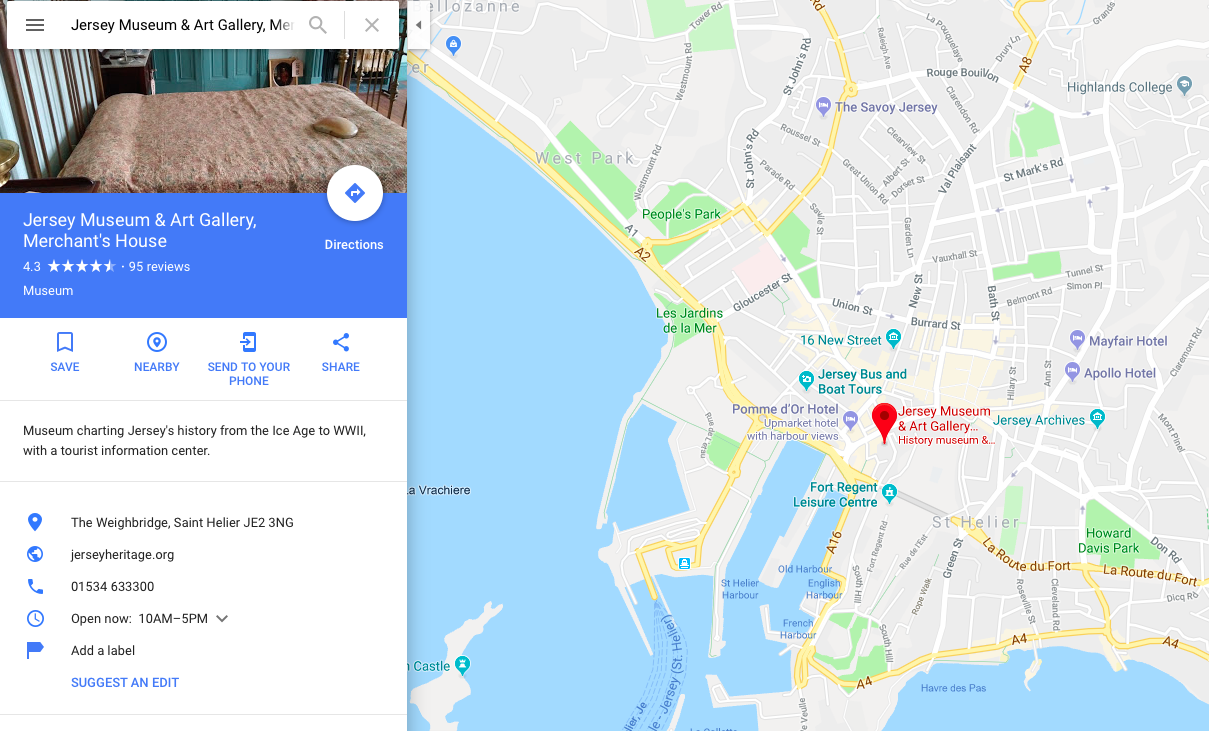 For my fourth photoshoot I decided to go to the Jersey Museum and focus on the Merchant’s house, looking at the old furniture. I wanted to interpret Walker Evan’s photography, specifically the photos in his book ‘ Message from the interior’ where he pays particular attention that he pays to the inanimate objects that are present, almost representing them as characters themselves.
For my fourth photoshoot I decided to go to the Jersey Museum and focus on the Merchant’s house, looking at the old furniture. I wanted to interpret Walker Evan’s photography, specifically the photos in his book ‘ Message from the interior’ where he pays particular attention that he pays to the inanimate objects that are present, almost representing them as characters themselves.
The Merchants house is a recreation of the home of Dr. Charles Ginestet, homeopathic doctor and political activist. The house was built in the English Georgian Style in 1818 by Philippe Nicolle, in what was then the red light district of St. Helier. It has been furnished to represent what it would have looked like in 1862.
Philipe Nicole was one of the most successful merchants pf his time with about 20 ships. He and his wife had 13 children but upon his death in 1836 the house was left to one of his daughters, Jeanne.
At the age of 47 Jeanne met Charles Ginestet who had been imprisoned in France for his political views and was recently widowed with three children to support. Within the year Jeanne married Charles who moved into the house with his children.

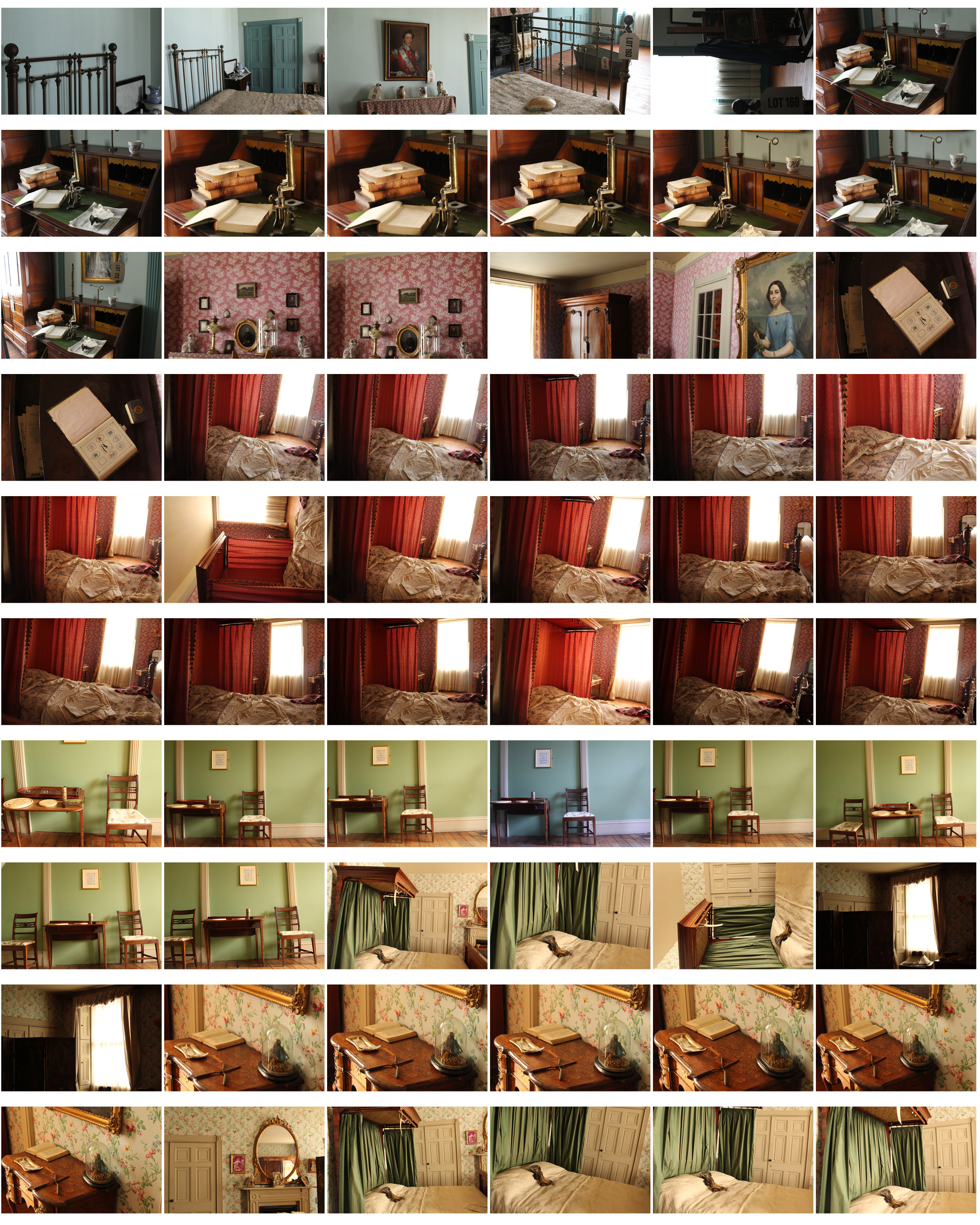
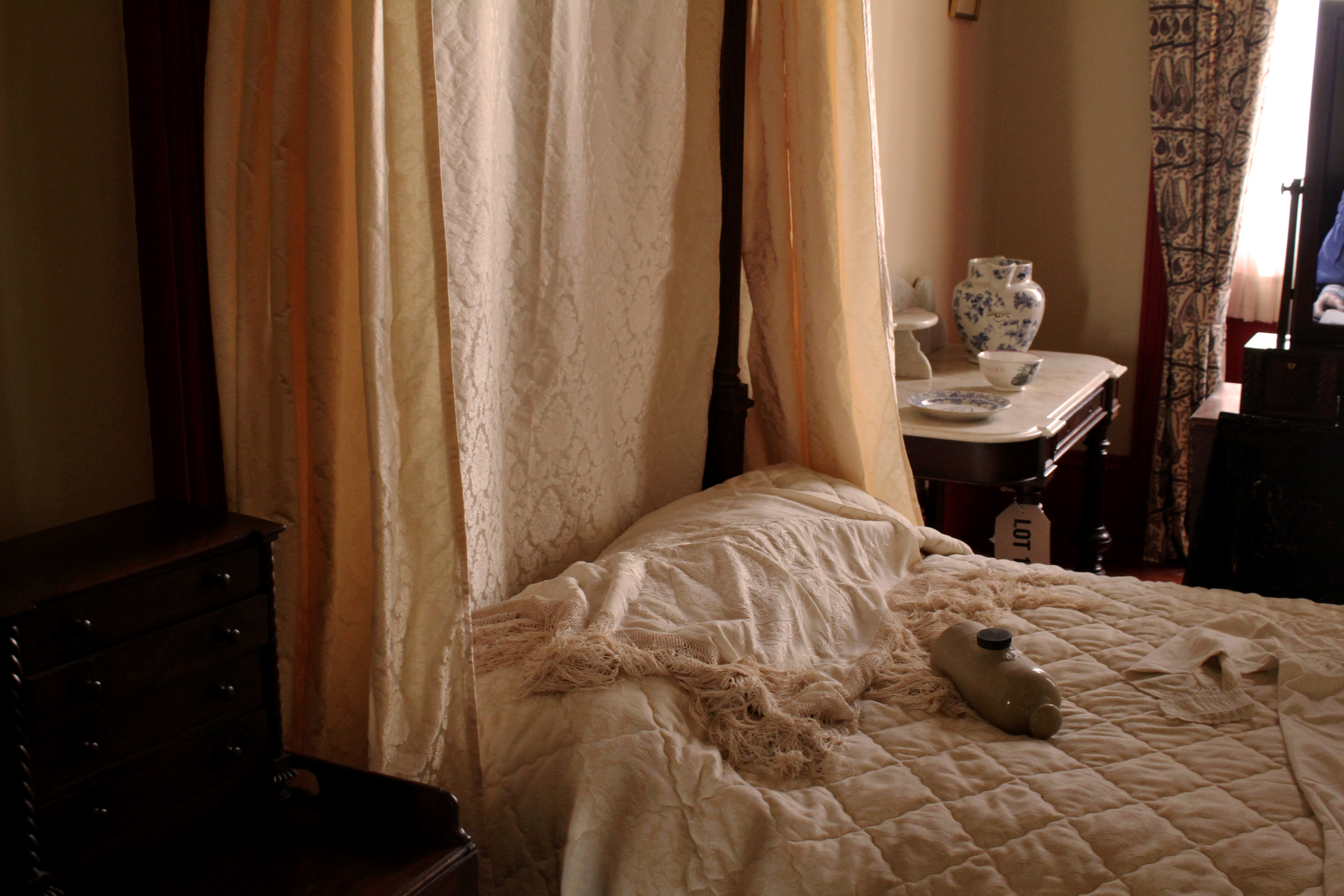
Technical
- The lighting used in this image is natural, the light coming from the window on the right. This gives the image a more authentic look as it doesn’t look manipulated or too intense. I used a fast shutter speed so there was no blur in my image.
- The angle this image was taken looks at the a four post bed from a sideways angle creating an interesting composition, rather than the image being taken from a front angle.
- This images ranges with dark brown tones to light ones, dark brown in the bottom left corner, which is then contrasted with the light bed sheets and canopies which have yellow and brown undertones.
Visual
- The lighting in this image creates light undertones, linking on with my other images from my project where the images look authentic and natural.
- I specifically wanted to photograph beds when i went to the merchants house as i wanted to interpret Walker Evan’s images of different beds in houses from the book ‘Message from the Interior’.
- The texture created by the material on the bed is what i focused on when taking the photo which gives the image depth and adds more detail. There’s a contrast in patterns made by different materials on and around the bed, e.g the checked pattern on the bed sheet, compared to the texture of the blanket on top and the pattern on the canopies on the four posts.
- This image depicts what a bedroom was like 1860, the appearance of the bed looks like a person has just slept in it and the casual placing of the furniture and the ornaments surrounding the bed giving the appearance of a natural setting rather than a staged one. This makes it easy for the audience to imagine that the image was taken in 1860.
Contextual
- The image is taken of a recreation of a bedroom from the 1860’s in the Merchant’s house.
- I took these images of the recreation of bedrooms and rooms in the 1800’s as i wanted to show what life was like then and show how conventions have stayed the same and some have changed. E.g some aspects like furniture have stayed similar, but the conventions of how we live have changed from the 1800’s to now.
Conceptual
- I wanted to take photos of furniture from a house in the 1880’s to link to my projects theme of how conventional objects and furniture have history and stories connected to them.
- The objects and furniture shown in these images create the impression that someone still uses them based of the casual appearance the settings give.
- This links to Walker Evan’s images where he pays particular attention to the inanimate objects that are present, almost representing them as characters themselves, also representing absence and the passage of time.
- My images show furniture and rooms like someone is living and using the furniture, but there aren’t any people, also representing, like Walker Evan, absence and the passage of time.

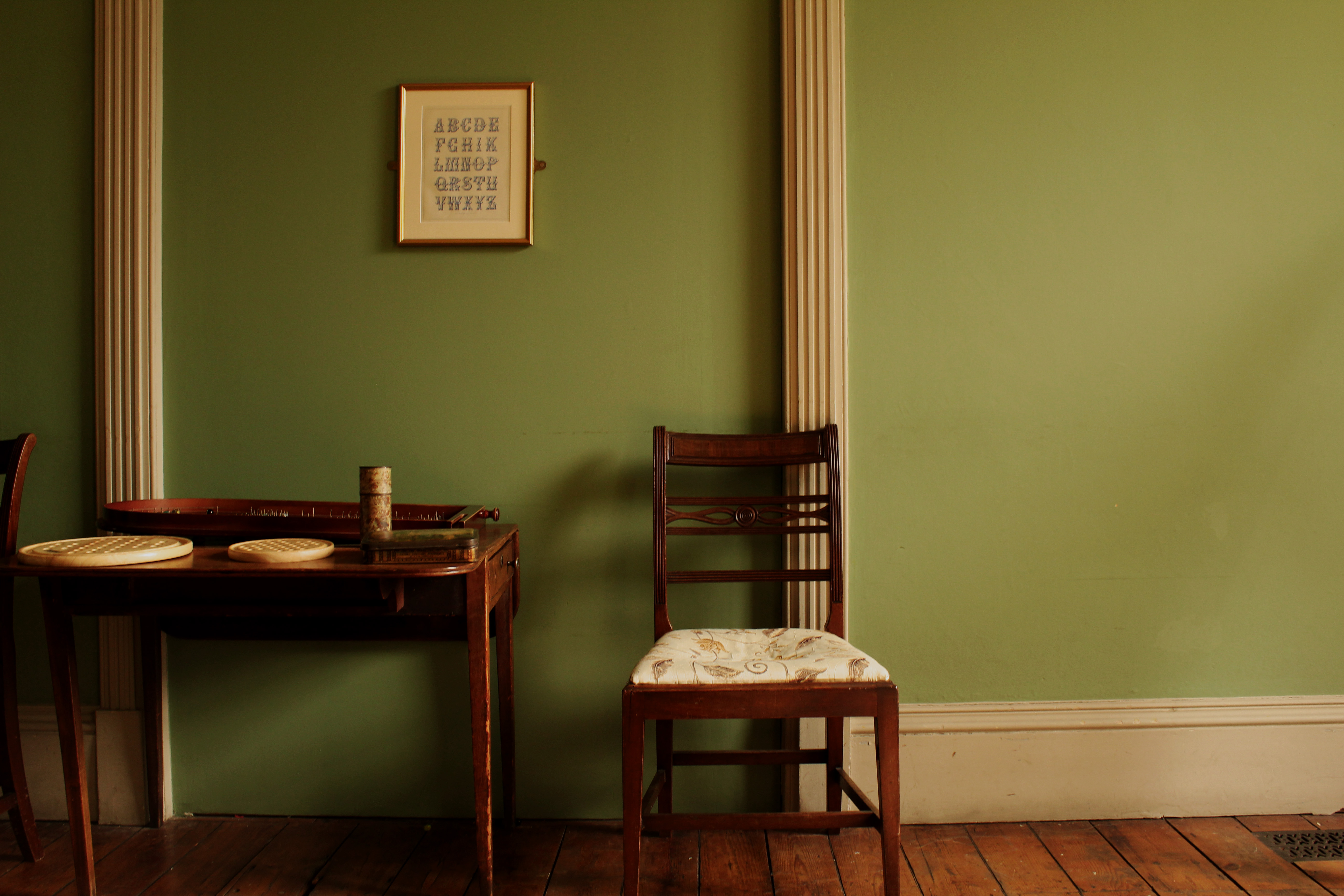
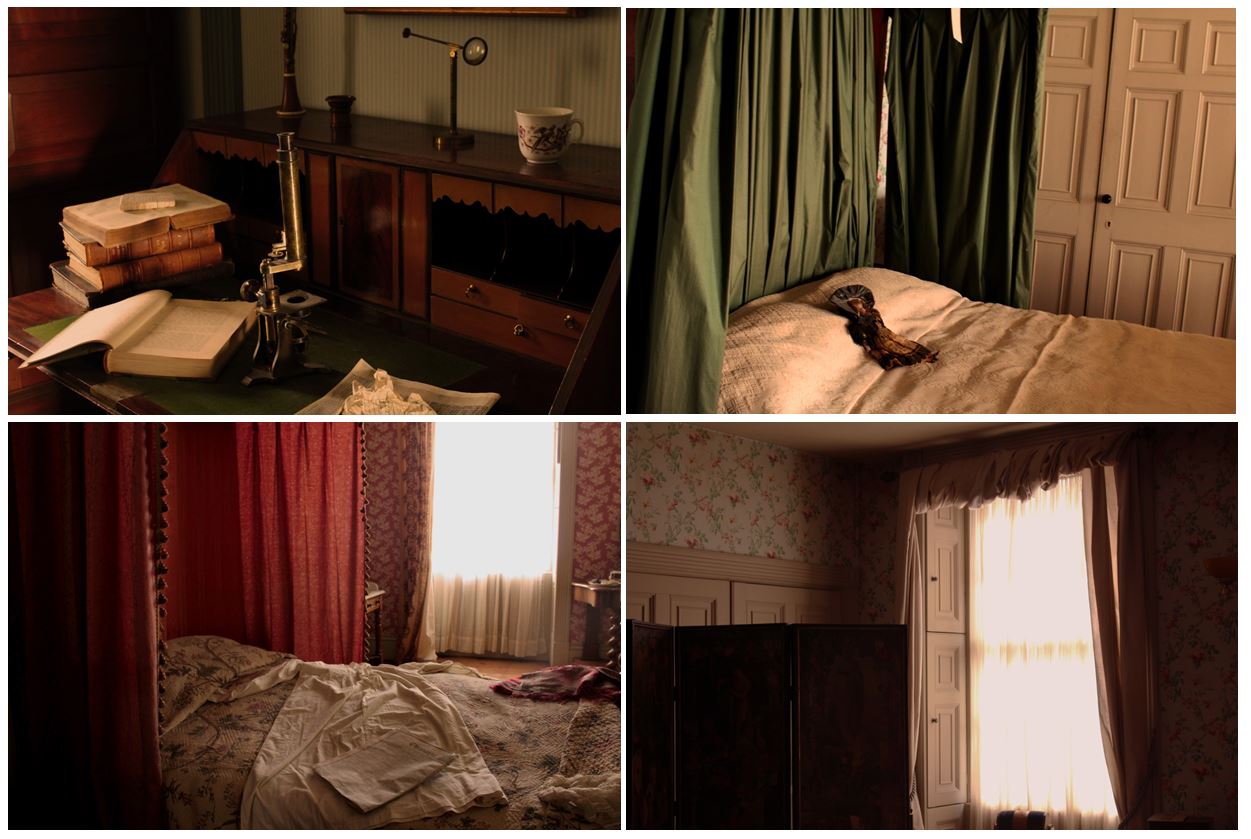
Rooms shown in the pictures:
Anne Nicolle’s bedroom:
- Her room is decorated in red, reflecting her family’s association with the Rose party.
- Gas lighting was installed in the 1830’s but paraffin lamps and candles were still used.
- Her was an ‘Albert’ with a partial canopy curtained for privacy and warmth and four posts.
Sydney Nicolle’s bedroom:
- His father (Jeanne’s brother) died and his mother remarried and movies to England, too he stay in Jersey and lived with his aunt Jeanne.
- His room was very simply furnished with a brass bed and various Militia items- uniform and sword.
Berthe and Alice Ginestet’s Bedroom:
- They shared the albert bed for warmth, and it was unusual for everyone to have their own bedroom in 1862.
- The room is typically floral with French wallpaper, drapes and privacy screen
Schoolroom
- Education in 1862 was not compulsory but those wealthy enough employed a governess to educate their children at home.
- Toys were designed for an educational purpose or to develop skills to take you into adult life.
- In a horse drawn society, a young boy would need to know how to ride a horse which is what the rocking horse was for.
- Jigsaws orientated from cutting out maps and scenes and fitting them back together, and the cup and ball encouraged hand/eye coordination and was known to be played by Queen Victoria.
- Children’s clothes did not exist before 1860 an they wore cut down versions of adult clothes i.e. sailor suits.
The flooring throughout the house is mahogany, imported from South America on board one of Nicolle’s ships. The floors were caulked with tarred string, like the deck of the ship. Victorians liked to show off their wealth, particularly if they were ‘new money’. The clothes they wore and the buildings they lived in demonstrated this. Paintings were often displayed in the hallways indicating the occupant’s wealth and status because this is where the guests were received.
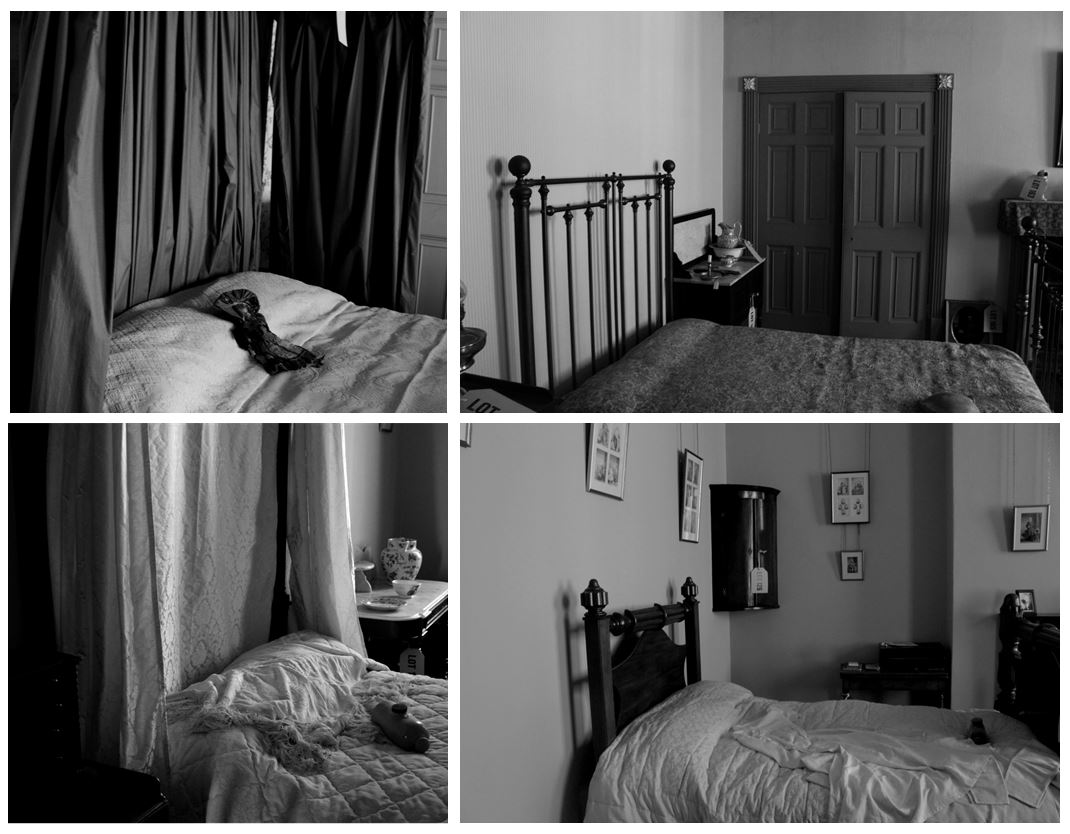
I edited some of the images from the photoshoot black and white to better interpret Walker Evan’s work and displayed them above. Below I have shown some of his photography to compare our images. I think I successfully interpreted his work paying particular attention to the inanimate objects that are present, almost representing them as characters themselves. I think the images I took represent the passage of time and absence, showing furniture and beds of people in the 1860’s, but the absence of people in the images show the history and how a conventional objects within a house can have more meaning than the purpose of what it was built for. In one of Walker Evan’s images shown below it displays a bed where it is clear someone is living in it as the bed is unmade like someone has just slept in it, which is also what I think i showed in my images. One difference between mine and Walker Evan’s images are that my images are of settings recreated of the 1860’s, whereas his images are actually depicting the 1960’s, time he was living in.

